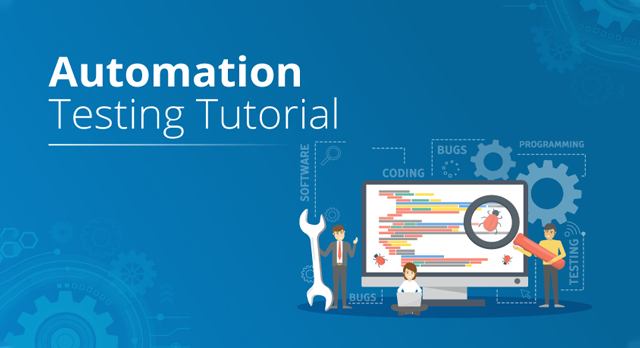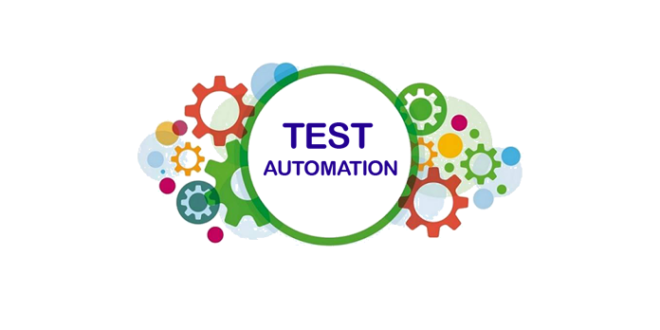The Ultimate Overview to Implementing Automation Testing Efficiently
The Ultimate Overview to Implementing Automation Testing Efficiently
Blog Article
From Manual to Automated Testing: A Comprehensive Guide to Transitioning Efficiently and Effectively
In the world of software testing, the change from handbook to automated procedures has actually become a significantly important change for organizations seeking to boost efficiency and accuracy in their testing methods. The journey from handbook to automated testing is not without its obstacles, yet when approached purposefully and with a clear plan in mind, the advantages can be substantial.
Advantages of Automated Testing
Automated testing supplies various benefits, enhancing performance and accuracy in software program development processes. Automated examinations can be run at the same time on multiple tools and running systems, significantly speeding up the screening phase compared to hand-operated testing.
Additionally, automated screening makes sure a higher degree of precision in discovering issues. Considering that automated tests adhere to predefined manuscripts, human error is minimized, leading to even more dependable test results. Consistency in screening is additionally boosted, as automated tests execute the same steps specifically each time they are run. This consistency is important in ensuring that all performances of the software application are completely tested, reducing the probability of undetected insects sliding via to production.
Choosing the Right Tools

First of all, examine your purposes and requirements. Understand the scope of your project, the technologies involved, and the skill collection of your team. This evaluation will certainly aid you determine the attributes and capacities you need in your screening devices.
Secondly, think about the compatibility of the tools with your existing systems and procedures. Smooth combination with your current software development lifecycle is important to make sure a smooth transition to automation.
Furthermore, assess the scalability and adaptability of the tools. As your screening needs advance, the tools ought to have the ability to adjust and suit adjustments properly.
Last but not least, variable in the assistance and area around the tools. When executing automated screening, robust assistance and an energetic user area can provide important sources and help. By meticulously considering these facets, you can select the right tools that straighten with your needs and set the phase for an effective change to automated testing.
Creating Efficient Test Manuscripts

When crafting examination manuscripts, it is vital to think about the particular demands of the software application being examined and ensure that the scripts resolve all important functionalities. Clear and descriptive calling conventions for examination scripts and examination instances can boost readability and maintainability. In addition, integrating mistake handling mechanisms within the test scripts can aid in determining and addressing problems without delay.
Moreover, organizing test scripts right into modular components can improve reusability and scalability, lowering redundancy and enhancing effectiveness in test script upkeep. Normal evaluations and updates to check scripts are crucial to equal developing software application demands and performances. By complying with these principles, testers can create durable and reliable examination manuscripts that contribute substantially to the success of automated screening procedures.
Integrating Automation Into Workflows
By perfectly incorporating automated testing tools like Selenium or Appium into the software program growth lifecycle, teams can achieve faster feedback on code adjustments, leading to quicker pest discovery and resolution. This integration allows for continuous screening throughout the growth process, guaranteeing that any concerns are determined early on, resulting in greater software application quality. Correct combination of automation tools calls for discover this info here cooperation between growth, screening, and operations teams to develop a unified process that enhances performance and effectiveness in supplying high-grade software application items.
Making Certain a Smooth Change
Successfully transitioning to automated testing includes thorough planning and mindful implementation to take full advantage of and lessen disruptions effectiveness in the software program advancement procedure - automation testing. To make certain a smooth shift, it is vital to start by carrying out a thorough analysis of the present screening processes and recognizing areas where automation can bring the most significant benefits. Involving with all stakeholders early in the procedure, consisting of developers, testers, and project managers, is essential for gathering support and buy-in for the automation initiative
Communication is vital throughout this transition stage. Clear interaction of the objectives, advantages, and expectations of automated screening aids to take care visit our website of any type of resistance or issues that might arise. In addition, providing appropriate training and sources for employee to upskill in automation tools and strategies is essential for making sure an effective shift.

Verdict
In verdict, transitioning from manual to automated screening uses countless benefits, consisting of boosted performance and integrity. By choosing the ideal devices, creating efficient test scripts, and incorporating automation effortlessly right into process, companies can make sure a smooth and successful transition. It is necessary to embrace automation as a useful asset in software application testing processes to enhance total high quality and performance.
In the world of software application screening, the shift from manual to automated processes has become a progressively vital shift for companies seeking to improve effectiveness and accuracy visit this site right here in their screening practices. Automated tests can be run concurrently on numerous devices and operating systems, substantially speeding up the testing phase compared to hand-operated testing. Consistency in testing is also enhanced, as automated tests implement the same actions precisely each time they are run.To make sure the successful application of picked testing devices, the production of reliable test manuscripts plays a critical function in validating the capability and performance of automated procedures - automation testing. By complying with these principles, testers can produce reliable and durable examination manuscripts that add dramatically to the success of automated screening processes
Report this page